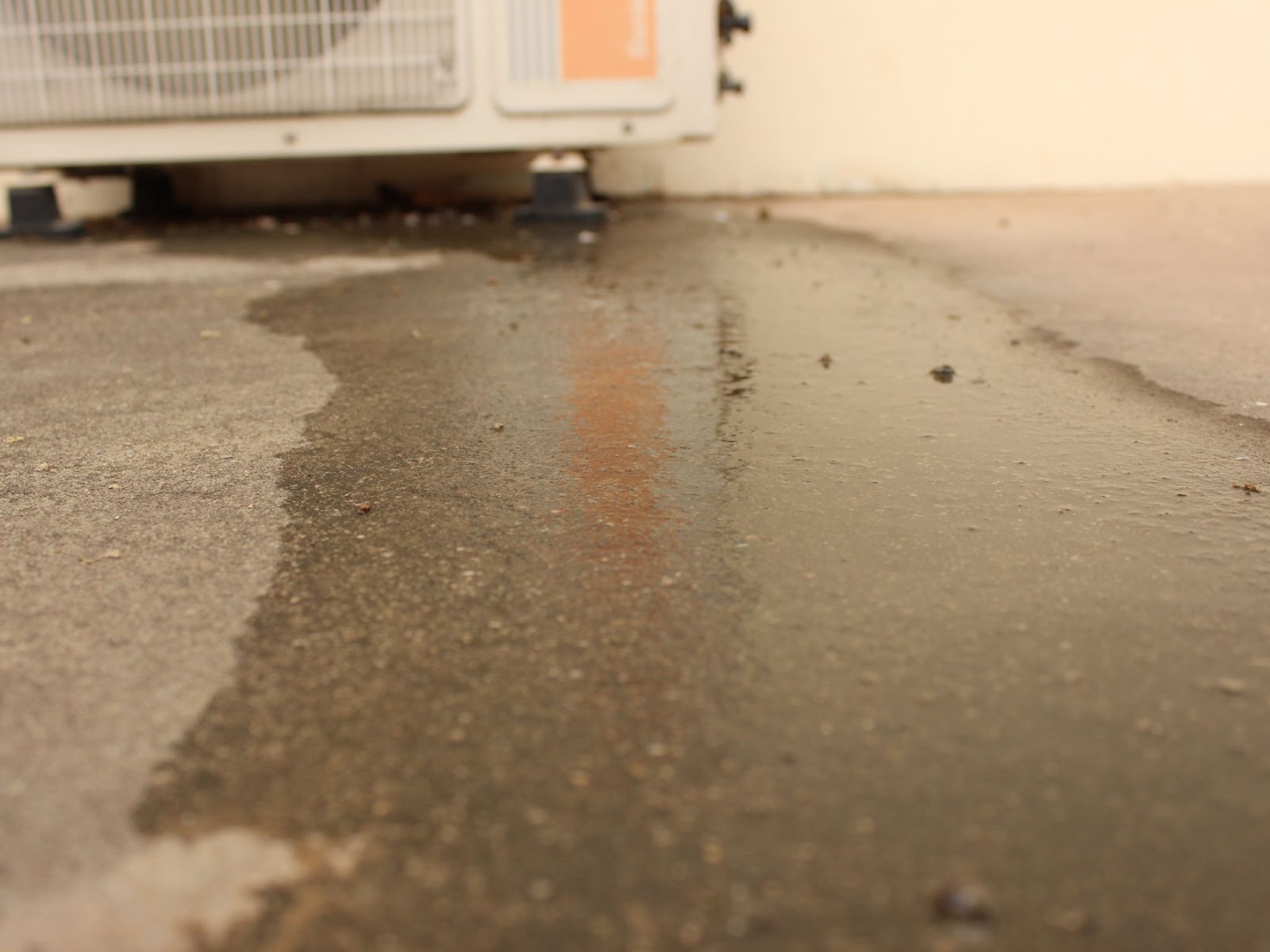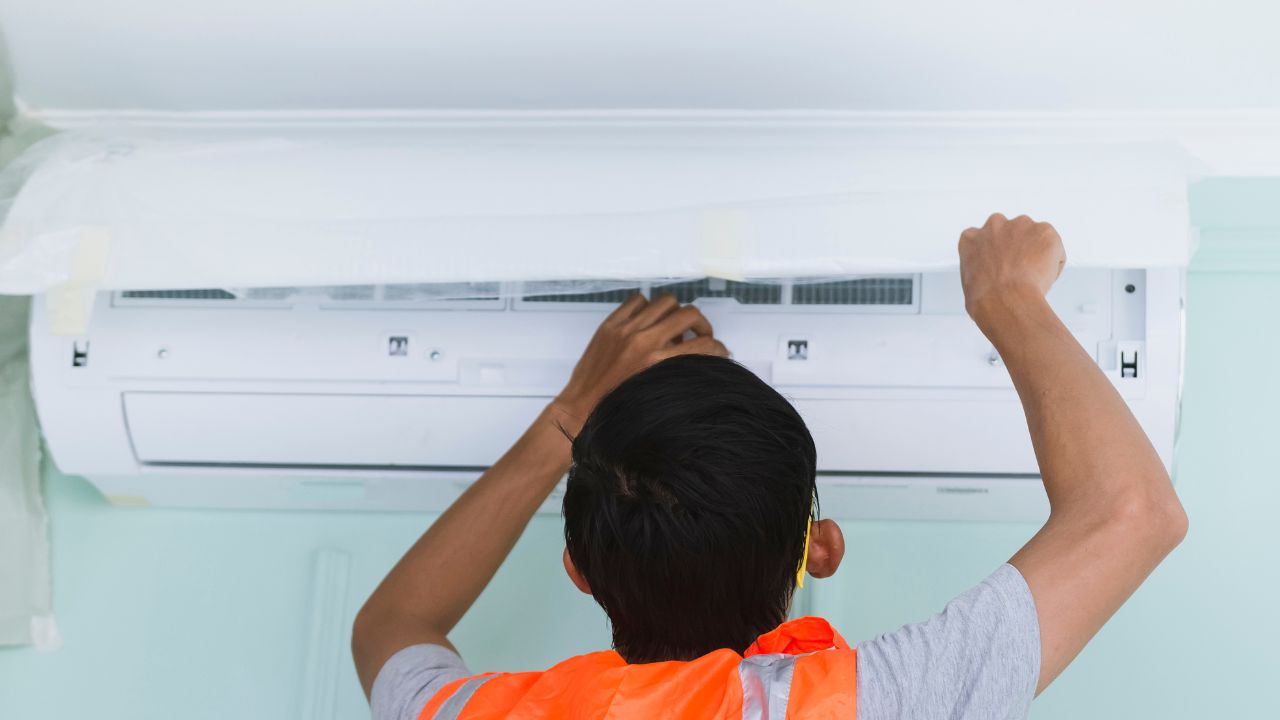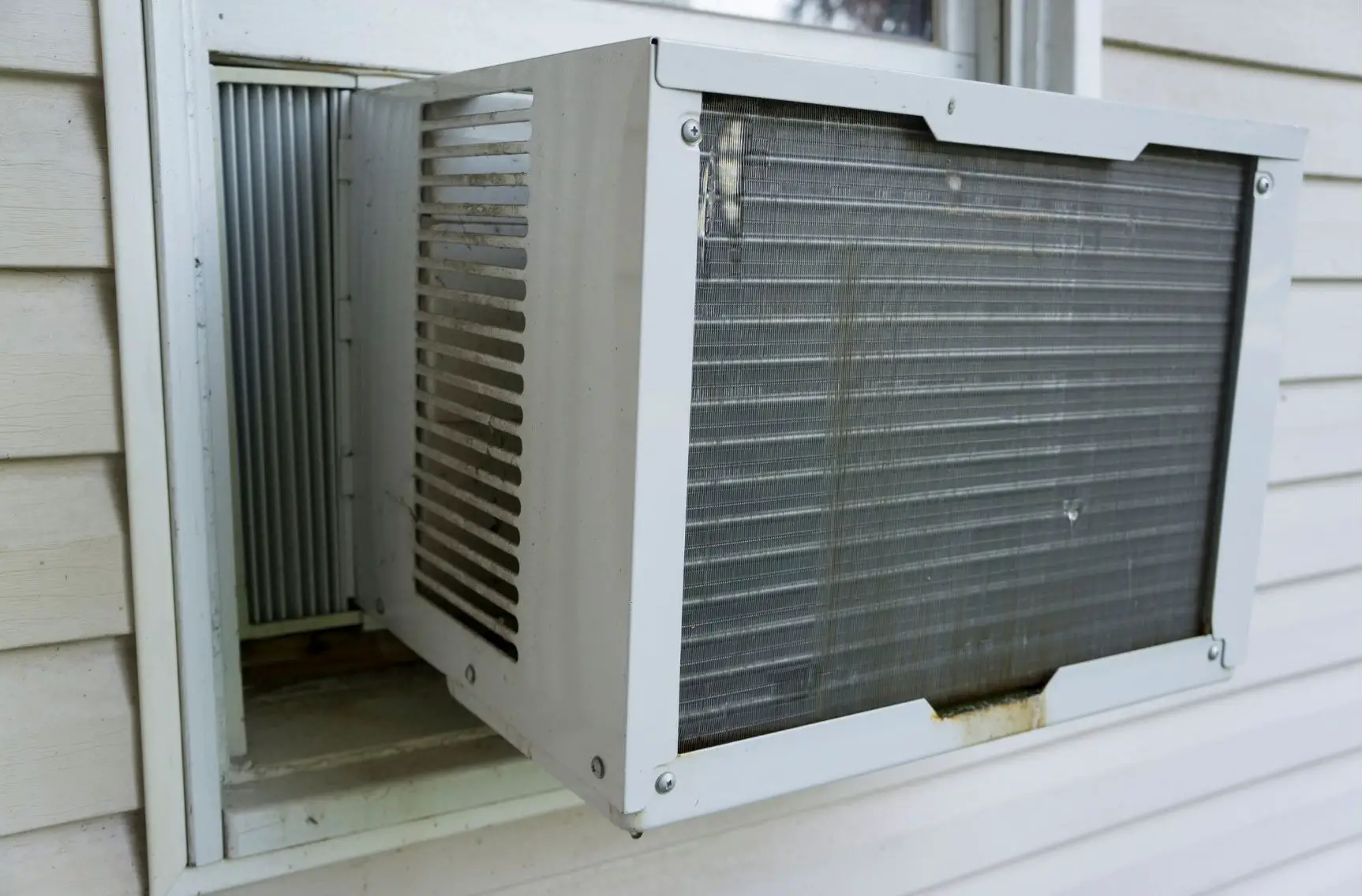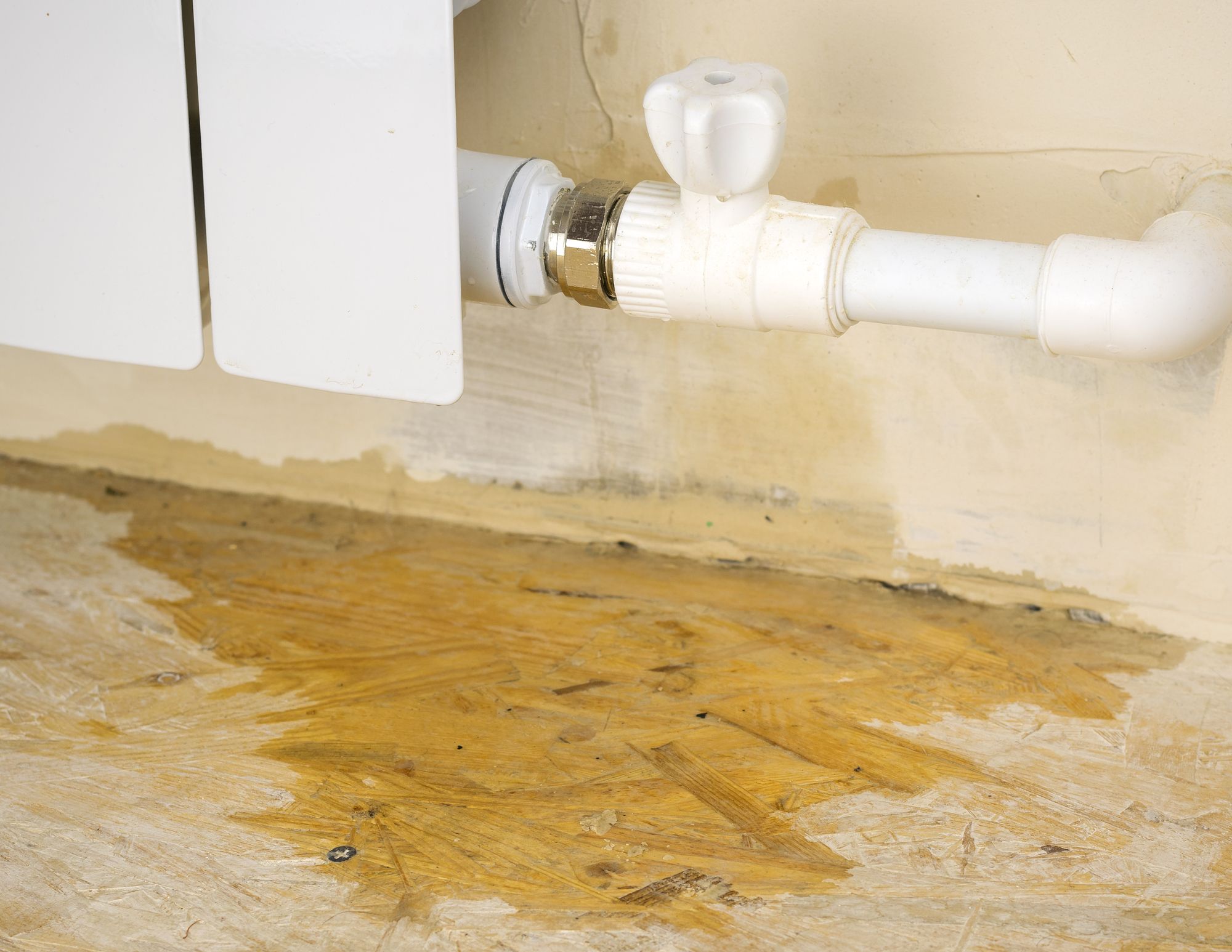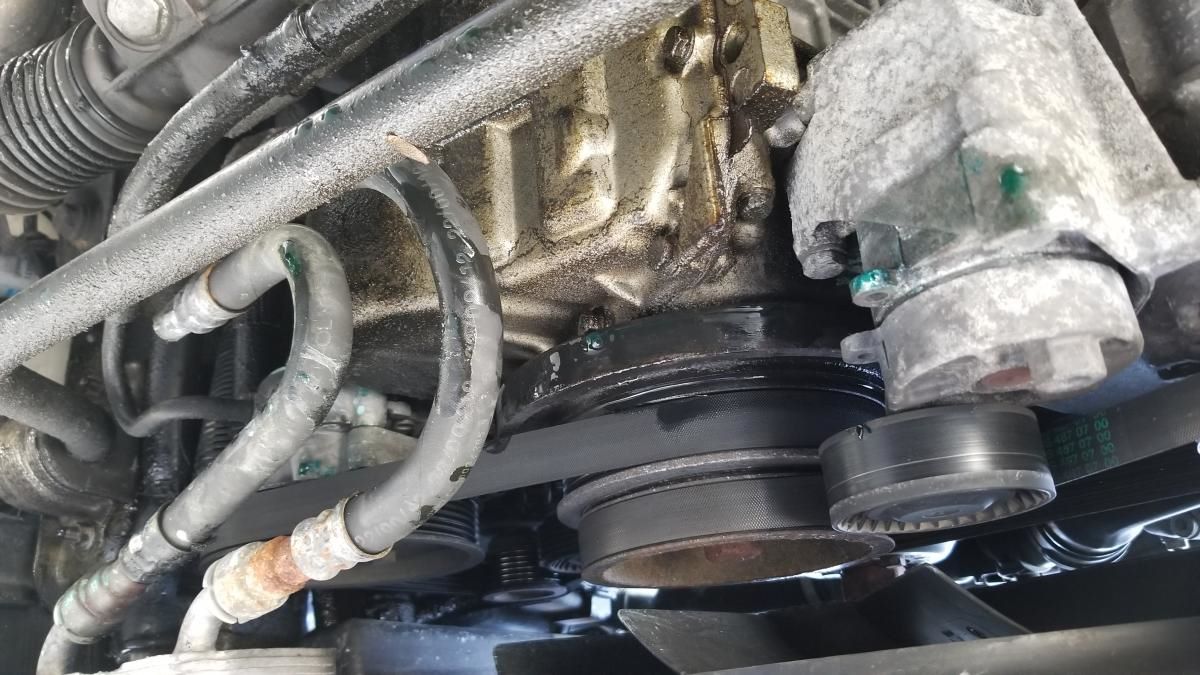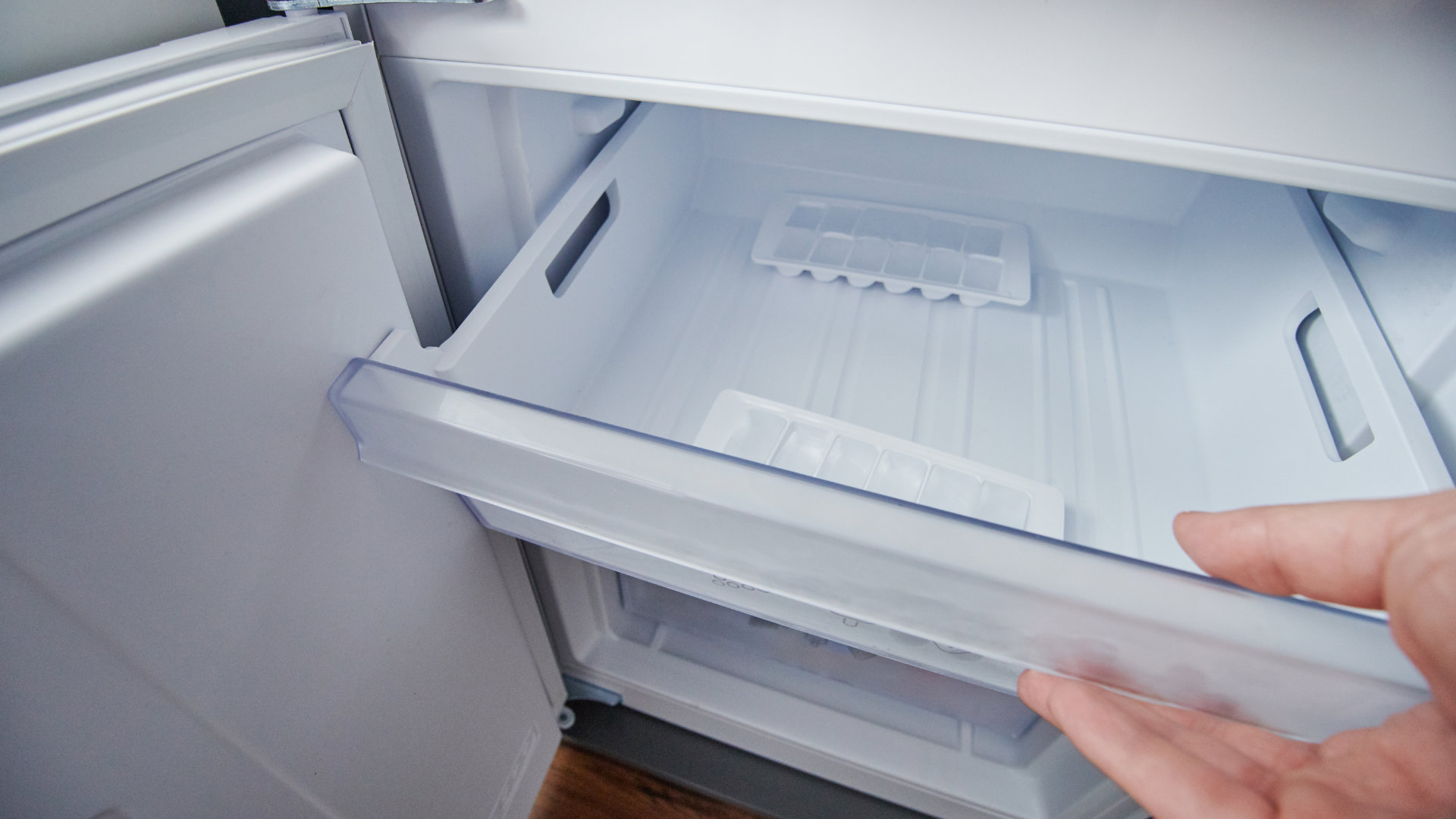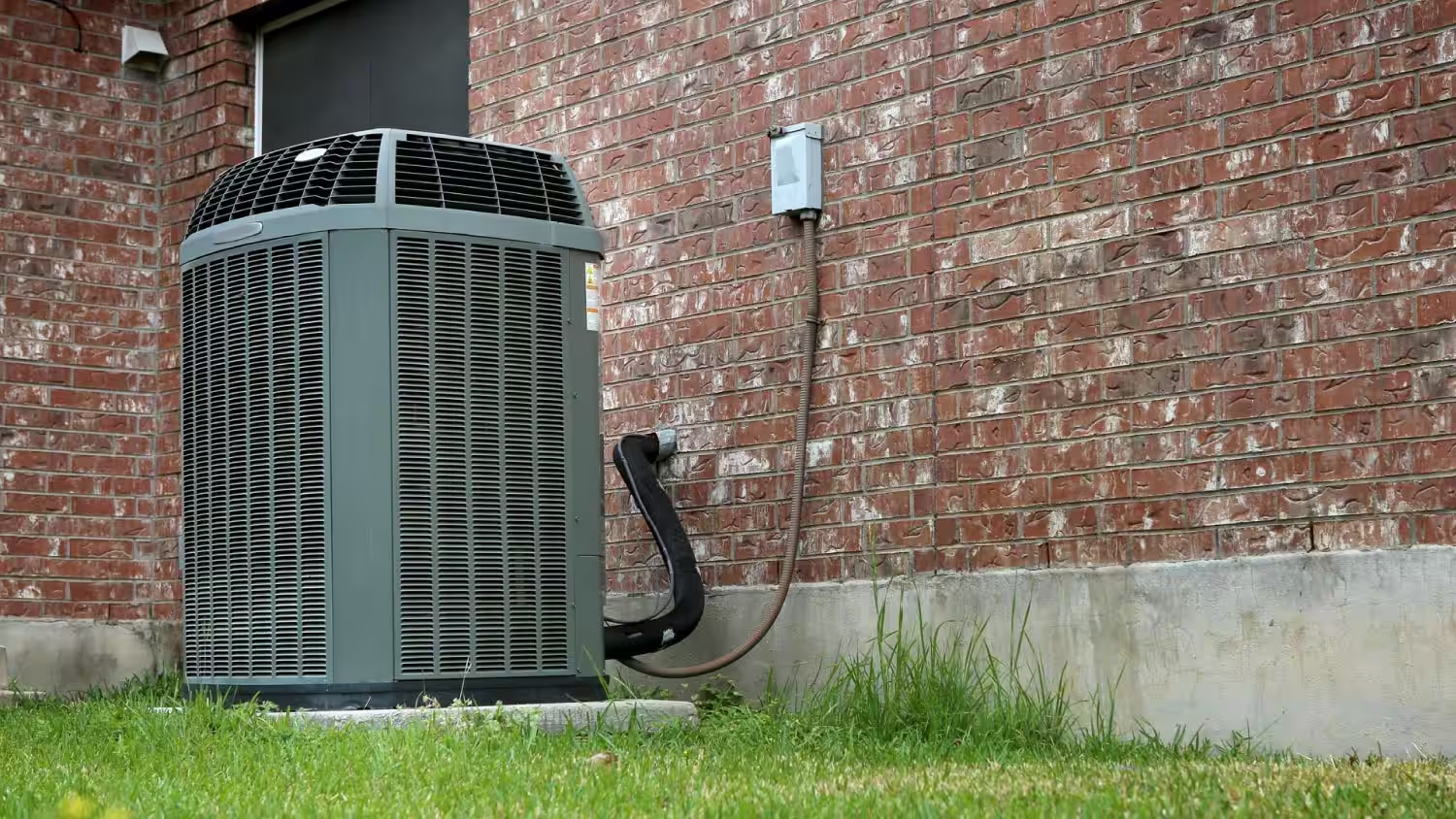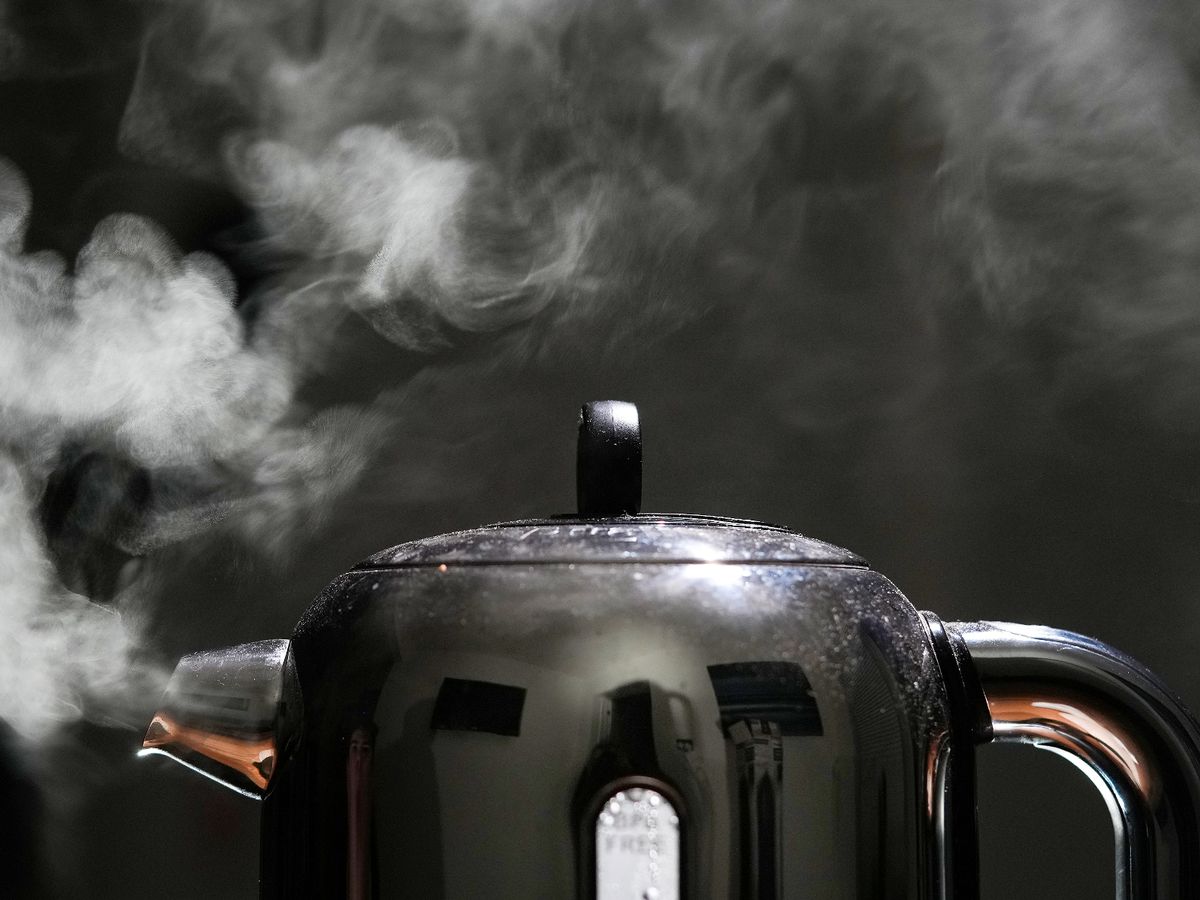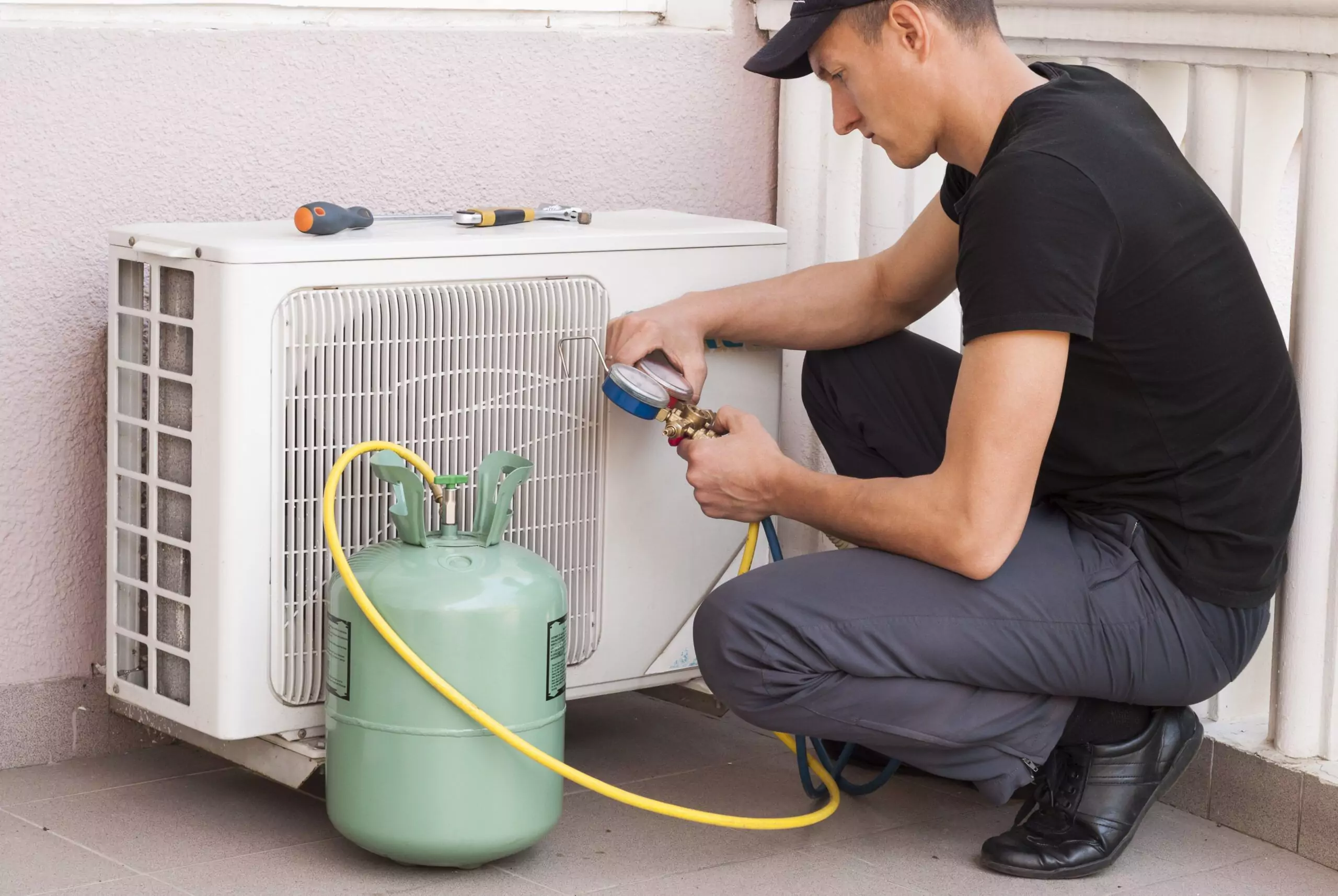Home>Home Maintenance>Why Would An Air Conditioner Leak Water
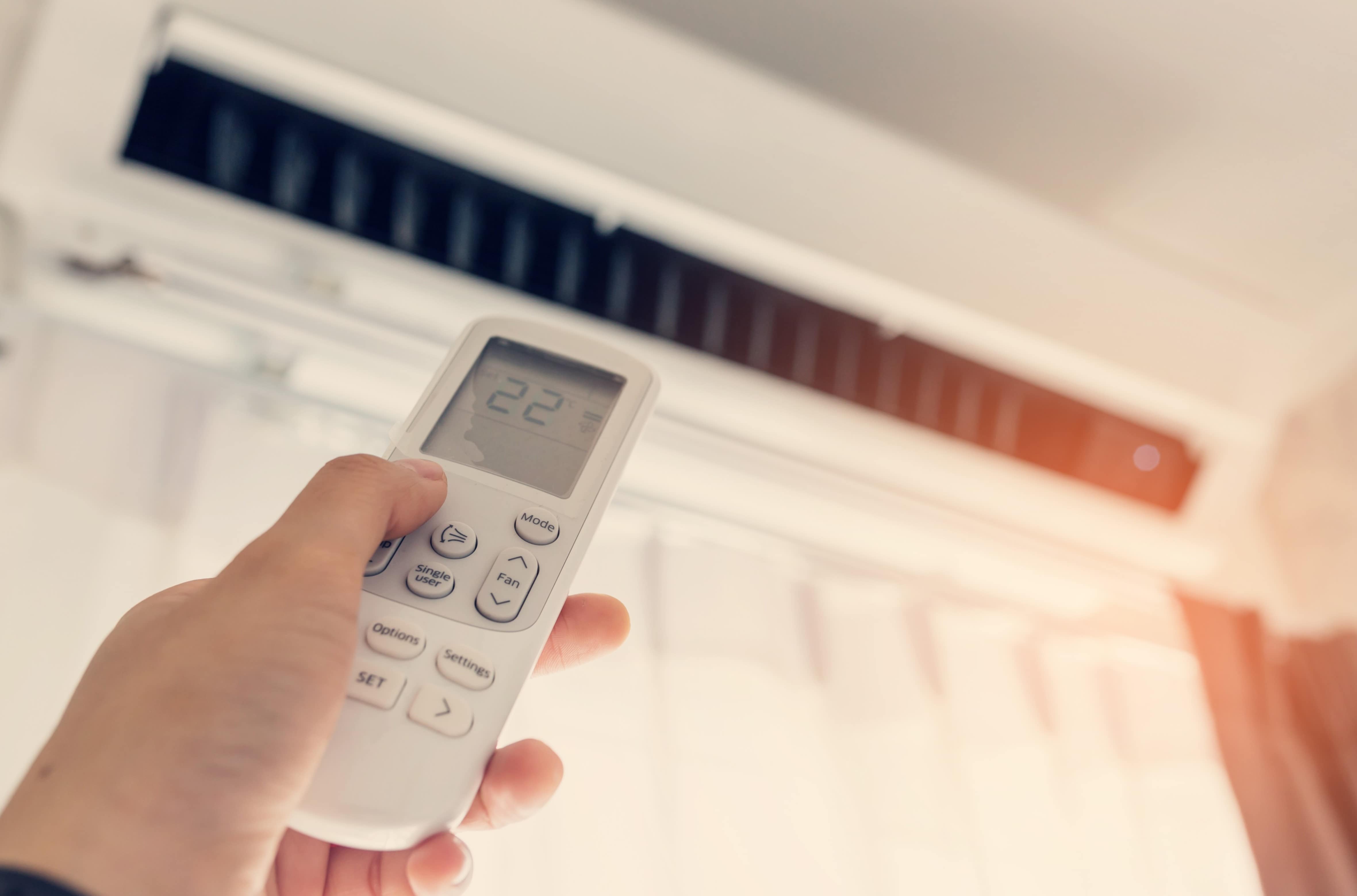

Home Maintenance
Why Would An Air Conditioner Leak Water
Modified: March 7, 2024
Learn why air conditioners may leak water and how to prevent it with proper home maintenance.
(Many of the links in this article redirect to a specific reviewed product. Your purchase of these products through affiliate links helps to generate commission for Storables.com, at no extra cost. Learn more)
Introduction
Welcome to the world of home maintenance! Whether you’re a seasoned DIY enthusiast or a homeowner looking to ensure your living space remains in optimal condition, understanding the intricacies of your home’s air conditioning system is crucial. One common issue that many homeowners encounter is an air conditioner leaking water. This can be a frustrating and potentially damaging problem if left unaddressed.
When your air conditioner is functioning properly, it should cool your home without any leaks. However, there are several reasons why an air conditioner may start leaking water. Understanding these causes and knowing how to identify and fix the issue can help prevent further damage and ensure your air conditioner operates efficiently.
In this article, we will explore the common causes of air conditioner water leaks and provide practical solutions to help you resolve the problem. Whether you’re dealing with a clogged condensate drain line, a frozen evaporator coil, or an incorrectly installed drain pan, we’ve got you covered. Let’s dive in and discover why your air conditioner might be leaking water.
Key Takeaways:
- Regularly replacing air filters and clearing condensate drain lines are crucial to prevent air conditioner water leaks. Proper maintenance ensures efficient cooling and prevents potential damage to your home.
- Managing humidity levels and controlling condensation are essential for maintaining a comfortable and healthy indoor environment. By taking proactive measures, you can minimize the risk of water leakage and ensure the optimal performance of your air conditioning system.
Read more: Why Would Hot Water Heater Leak
Common Causes of Air Conditioner Water Leaks
There are several potential causes for an air conditioner to leak water. Understanding these causes will help you identify the problem and take appropriate action to fix it. Here are the most common reasons why your air conditioner might be leaking water:
- Clogged Condensate Drain Line: Over time, the condensate drain line that carries away the moisture from your air conditioner can become clogged with dirt, debris, or algae. This blockage prevents the water from draining properly, causing it to back up and leak inside your home.
- Dirty Air Filters: If your air filters are dirty or clogged, they can disrupt the airflow over the evaporator coil. This can lead to reduced cooling efficiency and cause the evaporator coil to freeze. When the ice melts, it can result in water leakage.
- Improperly Installed Drain Pan: If the drain pan beneath the evaporator coil is not installed correctly or is damaged, water can leak out instead of being directed into the drain line. This can be due to poor installation or wear and tear over time.
- Low Refrigerant Levels: Insufficient refrigerant in your air conditioner can cause the evaporator coil to freeze, leading to water leakage when it thaws. Low refrigerant levels are typically a sign of a leak somewhere in the system and should be addressed by a professional.
- Frozen Evaporator Coil: If the airflow over the evaporator coil is restricted or inadequate, it can cause the coil to freeze. When the ice melts, it can result in water leakage. Restricted airflow can be caused by dirty air filters, blocked vents, or issues with the blower motor.
- Damaged or Disconnected Drain Pipe: The drain pipe that carries the condensate water away from your air conditioner can become damaged or disconnected, causing water to leak. This can occur due to age, corrosion, or improper installation.
- Humid Climate Conditions: In areas with high humidity, air conditioners work harder to remove moisture from the air. This increased workload can lead to an excess amount of water, causing leaks if the drainage system is not properly equipped to handle it.
- Excessive Condensation: In certain situations, such as when the temperature differential between the indoor and outdoor environment is significant, your air conditioner may produce more condensation than usual. If the drainage system is not able to keep up with the excess moisture, leaks can occur.
Now that we’ve explored the common causes of air conditioner water leaks, let’s move on to how to identify and fix these issues to ensure your air conditioner operates smoothly and efficiently.
Clogged Condensate Drain Line
A clogged condensate drain line is one of the most common causes of an air conditioner leaking water. Over time, the drain line can become obstructed by dirt, debris, or algae buildup, preventing proper drainage and causing the water to back up and leak.
To identify if a clogged condensate drain line is the culprit of your water leakage, you can inspect the area around your indoor air handler or furnace. Look for signs of water pooling or dripping near the unit. If you notice water accumulation, it’s likely that your condensate drain line is clogged and needs attention.
Here are some steps to fix a clogged condensate drain line:
- Turn off the power: Before attempting any repairs, ensure that power to the air conditioning system is turned off at the main circuit breaker. This will prevent any electrical accidents.
- Locate the access point: Find the access point for your condensate drain line. This is usually a PVC pipe or a PVC T-shaped fitting connected to the drain line. It’s typically located near the indoor air handler or furnace.
- Clean the drain line: Use a wet/dry vacuum or a thin brush to remove any debris or blockages from the drain line. Gently insert the vacuum nozzle or brush into the access point and remove as much buildup as possible. Be cautious not to damage the drain line while cleaning.
- Flush the drain line: After cleaning, you can flush the drain line with a mixture of equal parts water and bleach. Pour the solution into the access point, allowing it to flow through the drain line and clear any remaining blockages.
- Test the drainage: Once the drain line appears clear, turn on the power to your air conditioning system and observe the drainage. If the water flows freely and there are no signs of leakage, you have successfully resolved the clogged condensate drain line issue.
Regular maintenance of your air conditioner, such as cleaning or replacing air filters, can help prevent the condensate drain line from becoming clogged. Additionally, consider installing an algae or mold inhibitor to prevent microbial growth in the drain line.
By addressing a clogged condensate drain line promptly, you can prevent further water leakage and ensure that your air conditioner operates efficiently, keeping your home cool and comfortable.
Dirty Air Filters
Dirty air filters can also contribute to an air conditioner leaking water. When the air filters in your HVAC system become clogged with dust, pet dander, and other airborne particles, it restricts the airflow over the evaporator coil. This reduction in airflow can cause the evaporator coil to freeze up, resulting in water leakage when the ice melts.
To determine if dirty air filters are the culprit behind your water leakage, visually inspect the filters. If they appear dirty or clogged, it’s crucial to replace them with clean filters. You should aim to replace your air filters every one to three months, depending on your home’s specific needs.
Here are the steps to fix the issue of dirty air filters:
- Turn off the power: Ensure that the power to your air conditioning system is turned off at the main circuit breaker before attempting any maintenance or repairs.
- Locate the air filters: Depending on the type of HVAC system you have, the air filters may be located in the air handler or in the return air grille. Refer to your owner’s manual or consult a professional if you’re unsure of the location.
- Remove and inspect the filters: Gently remove the air filters from their housing and inspect them for dirt, debris, or signs of damage. If the filters are dirty or clogged, it’s time to replace them.
- Replace the filters: Purchase high-quality air filters that are compatible with your HVAC system. Make sure to follow the manufacturer’s instructions for proper installation and orientation of the filters.
- Regularly maintain the filters: To prevent future water leaks and maintain optimal airflow, make it a habit to check and replace the air filters at recommended intervals. This will help keep your air conditioner running efficiently and prolong its lifespan.
Regularly replacing dirty air filters not only prevents water leakage but also improves indoor air quality and helps your air conditioner operate more efficiently. Clean air filters allow for better airflow through the system, reducing strain on the evaporator coil and minimizing the risk of freezing and subsequent water leakage.
Remember, proper maintenance of your air filters is essential to prevent issues like water leaks and ensure the optimal performance of your air conditioning system.
Improperly Installed Drain Pan
An improperly installed drain pan is another common cause of an air conditioner leaking water. The drain pan sits beneath the evaporator coil and collects the condensate water that forms as your air conditioner cools the air. If the drain pan is not correctly installed or is damaged, it may not effectively collect and direct the water into the drain line, leading to water leakage.
Identifying if an improperly installed drain pan is causing your water leakage is relatively straightforward. Check for signs of water pooling or dripping around the indoor air handler or furnace. If you notice water accumulation in these areas, it’s likely that your drain pan needs attention.
To address this issue, follow these steps:
- Turn off the power: Before attempting any repairs, ensure that the power to your air conditioning system is turned off at the main circuit breaker.
- Access the drain pan: Locate the drain pan, usually positioned underneath the evaporator coil, near the indoor air handler or furnace. The access panel to the drain pan may vary depending on your specific air conditioning system.
- Inspect the drain pan: Examine the drain pan for any visible signs of damage, such as cracks, holes, or misalignments. If you determine that the drain pan is improperly installed, carefully realign it or contact a professional if it requires repair or replacement.
- Clean the drain pan: If the drain pan is intact but dirty, remove any debris or buildup that may be obstructing the water flow. You can use a mild detergent and warm water to clean the drain pan effectively.
- Test for proper drainage: Once the drain pan is clean and properly installed, turn on the power to your air conditioning system and observe if the water drains properly into the drain line. If there are no signs of leakage, you have successfully resolved the issue of an improperly installed drain pan.
If you are unsure about inspecting or realigning the drain pan yourself, it’s recommended to seek assistance from an HVAC professional. They can ensure that the drain pan is correctly installed and functioning as intended, preventing further water leakage and potential damage to your air conditioning system.
Ensuring that the drain pan is properly installed is essential for the effective drainage of condensate water. By addressing this issue promptly, you can prevent water leakage and maintain the efficient operation of your air conditioner.
Read more: Why Would My Air Conditioner Stop Working
Low Refrigerant Levels
Low refrigerant levels in your air conditioning system can contribute to water leakage. Refrigerant is responsible for absorbing heat from the indoor air and cooling it down. If your system is low on refrigerant, it can cause the evaporator coil to freeze. As the coil thaws, water is produced and can leak from the unit.
Identifying if low refrigerant levels are causing your water leakage can be challenging without professional assistance. However, some signs to look out for include reduced cooling performance, longer cooling cycles, and hissing or bubbling sounds near the refrigerant lines.
If you suspect low refrigerant levels are the issue, it’s crucial to contact a professional HVAC technician. They will be able to measure the refrigerant levels accurately and identify any leaks in the system. Here are the steps they may take to address low refrigerant levels:
- Evaluate the refrigerant levels: The technician will use specialized equipment to measure the amount of refrigerant in your system and determine if it’s low.
- Check for leaks: If the refrigerant levels are low, the technician will inspect the system for any leaks. Common areas where leaks occur include the refrigerant lines, connections, and valves.
- Fix the leaks: If leaks are detected, they will be repaired by sealing or replacing the affected components.
- Recharge the system: Once the leaks are fixed, the technician will recharge the system with the appropriate amount of refrigerant to the manufacturer’s specifications.
- Test & monitor: After recharging the system, the technician will test its performance and monitor it to ensure that the refrigerant levels remain stable. This will prevent further water leakage and help your air conditioner operate efficiently.
It’s important to note that handling refrigerant requires specialized knowledge and equipment. It is not recommended for homeowners to attempt to recharge the system themselves. Always contact a professional HVAC technician to address low refrigerant levels and any related issues.
By addressing low refrigerant levels and repairing any leaks, you can prevent water leakage and ensure that your air conditioning system operates optimally, providing efficient cooling and comfort.
Frozen Evaporator Coil
A frozen evaporator coil is another common cause of water leakage in an air conditioning system. The evaporator coil is responsible for removing heat from the air by transferring it to the refrigerant. However, if the airflow over the coil is restricted or inadequate, it can cause the coil to freeze up. When the ice eventually melts, it results in water leakage.
Identifying a frozen evaporator coil can be relatively simple. If you notice reduced cooling performance, weak airflow from the vents, or water leakage around the indoor unit, there’s a possibility that your evaporator coil is frozen.
To fix a frozen evaporator coil, follow these steps:
- Turn off the power: Before attempting any repairs, make sure to turn off the power to your air conditioning system at the main circuit breaker.
- Allow the coil to thaw: To accelerate the thawing process, you can turn on the fan setting on your thermostat without activating the cooling mode. This will help melt the ice on the evaporator coil.
- Check the airflow: Once the coil has thawed, check the airflow to ensure it is not restricted. Make sure that all vents and registers are open and unobstructed.
- Change the air filter: A dirty air filter can contribute to restricted airflow and the formation of ice on the coil. Replace the air filter with a clean one and continue to regularly maintain and replace it as recommended by the manufacturer.
- Schedule professional maintenance: It’s essential to have a professional HVAC technician inspect your system. They can identify and address any underlying issues that may have caused the evaporator coil to freeze, such as refrigerant leaks or problems with the blower motor.
It’s important to note that a frozen evaporator coil may be a symptom of a larger problem within your air conditioning system. Therefore, professional maintenance and inspection are crucial to identify the root cause and prevent future occurrences of a frozen coil.
By addressing a frozen evaporator coil promptly and taking the necessary steps to improve airflow and maintain the system, you can prevent water leakage and ensure the efficient and reliable operation of your air conditioning system.
Damaged or Disconnected Drain Pipe
A damaged or disconnected drain pipe can be another culprit behind an air conditioner leaking water. The drain pipe is responsible for carrying the condensate water away from the evaporator coil and directing it outside or into a drainage system. If the drain pipe becomes damaged or disconnected, water can leak from the unit instead of being properly expelled.
Identifying if a damaged or disconnected drain pipe is causing the water leakage can be relatively straightforward. Check around the indoor unit or air handler for signs of water pooling or dripping. If you see water accumulation and there is no other apparent source, it’s likely that your drain pipe needs attention.
To address this issue, follow these steps:
- Turn off the power: Before attempting any repairs, ensure that the power to your air conditioning system is turned off at the main circuit breaker.
- Locate the drain pipe: The drain pipe is usually a PVC pipe attached to the air handler or located near it. Trace the pipe to inspect for any visible damage or signs of disconnection.
- Repair the damaged pipe: If the drain pipe is damaged, you may need to repair or replace the affected section. This may involve cutting out the damaged portion and installing a new piece of PVC pipe, using appropriate connectors and adhesive.
- Reconnect the disconnected pipe: If the drain pipe is disconnected, securely reattach it to the air handler or drainage system, ensuring a tight and watertight connection.
- Test for proper drainage: After making the necessary repairs or reconnections, turn on the power to your air conditioning system and observe if the water drains properly through the pipe. If there are no signs of leakage, you have successfully resolved the issue of a damaged or disconnected drain pipe.
If you are not confident in performing these repairs yourself, it’s recommended to seek assistance from a professional HVAC technician. They have the expertise and tools necessary to ensure proper repairs and will prevent further water leakage.
By promptly addressing a damaged or disconnected drain pipe, you can effectively redirect condensate water away from your air conditioner and avoid water leakage, maintaining the efficient and reliable operation of your cooling system.
Humid Climate Conditions
In areas with high humidity, air conditioners work harder to remove moisture from the air. This increased workload can lead to an excess amount of water, which can cause water leakage if the drainage system is not adequately equipped to handle it.
In humid climate conditions, it’s essential to have a properly functioning and well-maintained air conditioning system. Here are some tips to manage water leakage in humid climates:
- Ensure proper insulation: Proper insulation of your home can help reduce the amount of moisture that enters your living space. Seal any air leaks, insulate windows and doors, and consider using dehumidifiers in areas of high humidity.
- Maintain optimal humidity levels: It’s crucial to manage indoor humidity levels to avoid excessive moisture accumulation. Keep humidity levels between 30-50% using dehumidifiers or adjusting the settings on your air conditioner.
- Regularly clean and maintain the system: In humid climates, it’s important to regularly clean and maintain your air conditioning system. Clean or replace air filters frequently, check the drain line for obstructions, and schedule professional maintenance to ensure proper functioning.
- Consider using a condensate pump: If your air conditioning system is unable to adequately drain the condensate water due to the high humidity, you may consider installing a condensate pump. This pump helps expel the water safely away from the unit, reducing the likelihood of water leakage.
- Address any leaks promptly: If you notice water leakage or excessive condensation around your air conditioning system, it’s important to address the issue promptly. Determine the cause of the leakage and take appropriate action to prevent further damage.
Living in a humid climate requires extra attention to moisture control and proper maintenance of your air conditioning system. By following these tips and managing the humidity levels in your home, you can minimize the risk of water leakage and ensure the efficiency and performance of your air conditioner.
Remember, if you experience persistent water leakage or have concerns about managing humidity in your home, it’s best to consult with a professional HVAC technician who can provide guidance and solutions tailored to your specific needs.
Read more: Why Is My Air Conditioning Leaking Water
Excessive Condensation
In certain situations, such as when there is a significant temperature differential between the indoor and outdoor environment, your air conditioning system may produce more condensation than usual. If the drainage system is not adequately equipped to handle this excess moisture, water leakage can occur.
To effectively manage excessive condensation and prevent water leakage, consider the following steps:
- Maintain proper temperature settings: Keeping your home at a consistent and appropriate temperature can help minimize the fluctuations that lead to excessive condensation. Avoid setting the thermostat too low, as this can cause the evaporator coil to cool excessively and produce more condensation.
- Check and clean the drainage system: Regularly inspect the drainage system, including the condensate drain line, drain pan, and condensate pump (if applicable). Clear any blockages or debris that may restrict the flow of water and lead to overflow or leakage.
- Insulate exposed ductwork: Properly insulating exposed ductwork can help prevent the formation of condensation on the surface of the ducts. This reduces the potential for excess moisture to accumulate, decreasing the likelihood of water leakage.
- Improve ventilation and airflow: Poor ventilation can contribute to moisture buildup, leading to excessive condensation. Ensure that your home has proper airflow by keeping vents and registers unobstructed, using fans, and opening windows or using exhaust fans as needed.
- Consider installing a dehumidifier: If you live in a particularly humid climate or have consistently high indoor humidity levels, installing a dehumidifier can help reduce excess moisture in the air. This can alleviate the strain on your air conditioning system and minimize the occurrence of water leakage.
- Regular maintenance and inspection: Conduct regular maintenance on your air conditioning system, including cleaning or replacing air filters, checking the refrigerant levels, and scheduling professional inspections. This ensures that your system operates efficiently and can effectively handle condensation.
By taking proactive measures to manage excessive condensation, you can minimize the risk of water leakage and maintain the optimal performance of your air conditioning system. However, if you notice persistent water leakage or have concerns about managing condensation in your home, it’s advisable to consult with a professional HVAC technician to assess and address the issue.
Remember, a well-maintained and properly functioning air conditioning system is key to controlling condensation and preventing water leakage.
How to Identify and Fix Air Conditioner Water Leaks
Identifying and fixing air conditioner water leaks is crucial to prevent further damage and maintain the efficiency of your cooling system. Here are steps to help you identify and fix air conditioner water leaks:
1. Checking the Condensate Drain Line:
Inspect the area around your indoor air handler or furnace for signs of water pooling or dripping. If you notice water accumulation, it may indicate a clogged condensate drain line. To fix it:
- Turn off the power to your air conditioner.
- Locate the access point or PVC pipe connected to the drain line.
- Clean the drain line using a wet/dry vacuum or a thin brush.
- Flush the drain line with a mixture of water and bleach.
- Turn on the power and observe if the water drains properly.
2. Regularly Replacing Air Filters:
Dirty air filters can restrict airflow and lead to a frozen evaporator coil, resulting in water leakage. To fix this:
- Turn off the power to your air conditioner.
- Locate and inspect the air filters.
- If dirty, replace them with clean filters.
- Maintain a regular schedule for filter replacement.
3. Ensuring Proper Drain Pan Installation:
If the drain pan beneath the evaporator coil is improperly installed or damaged, it can cause water leakage. To fix this:
- Turn off the power to your air conditioner.
- Inspect the drain pan for damage or misalignment.
- Repair or replace the drain pan if necessary.
- Clean the drain pan to remove any debris.
- Turn on the power and ensure proper drainage.
4. Refrigerant Level Inspection and Recharge:
Low refrigerant levels can lead to a frozen evaporator coil and subsequent water leakage. It’s best to contact a professional HVAC technician to inspect and recharge the refrigerant system.
5. Thawing a Frozen Evaporator Coil:
If you notice a frozen evaporator coil, follow these steps:
- Turn off the power to your air conditioner.
- Allow the coil to thaw naturally or use a gentle heat source to speed up the process.
- Check the airflow and ensure proper ventilation.
- Replace dirty air filters.
- Schedule professional maintenance if recurring freezing occurs.
6. Repairing or Reconnecting Drain Pipe:
A damaged or disconnected drain pipe can cause water leakage. To fix this:
- Turn off the power to your air conditioner.
- Inspect the drain pipe for damage or disconnection.
- Repair or replace damaged sections of the pipe.
- Reconnect the drain pipe securely.
- Turn on the power and check for proper drainage.
7. Managing Humidity Levels:
In humid climates, excess moisture can lead to water leakage. To manage humidity:
- Ensure proper insulation and ventilation in your home.
- Use dehumidifiers where necessary.
- Maintain optimal indoor humidity levels.
8. Controlling Condensation:
To control condensation and prevent water leakage:
- Maintain consistent temperature settings.
- Clean and maintain the drainage system.
- Insulate exposed ductwork.
- Consider installing a dehumidifier.
- Schedule regular maintenance and inspections.
If you are uncertain or uncomfortable performing any of these steps, it’s best to seek assistance from a professional HVAC technician. They have the expertise to identify and fix air conditioner water leaks, ensuring the optimal performance and longevity of your cooling system.
Checking the Condensate Drain Line
One of the first steps in identifying and fixing an air conditioner water leak is to check the condensate drain line. The condensate drain line is responsible for carrying away the moisture that is produced when your air conditioner cools your home. Over time, this drain line can become clogged or blocked, leading to water leakage.
To check the condensate drain line, follow these steps:
- Turn off the power: Before beginning any maintenance or inspection, it is crucial to turn off the power to your air conditioning system. This can typically be done by switching off the circuit breaker that controls the unit.
- Locate the condensate drain line: The condensate drain line is usually a PVC pipe or a PVC T-shaped fitting that is connected to the drain pan below the evaporator coil. You can find it near the indoor air handler or furnace.
- Inspect the drain line: Take a close look at the condensate drain line for any signs of blockage or clogging. Look for accumulation of dirt, debris, or algae that may be obstructing the flow of water. A clogged drain line may cause water to back up and leak from the air conditioner.
- Clear the drain line: If you notice any blockage in the condensate drain line, it is essential to clear it to restore proper water drainage. You can use a wet/dry vacuum or a thin brush to remove the debris. Gently insert the vacuum nozzle or brush into the access point of the drain line and clean out as much buildup as possible. Be careful not to damage the drain line while cleaning.
- Flush the drain line: After clearing the blockage, you can flush the drain line with a mixture of equal parts water and bleach. This helps remove any remaining debris and inhibits the growth of mold or algae. Pour the solution into the access point of the drain line, allowing it to flow through and clean the line thoroughly.
- Test the drainage: Once you have cleared the drain line and flushed it with the bleach solution, turn the power back on to your air conditioning system and observe the drainage. If the water flows freely and there are no signs of leakage or backup, you have successfully addressed the issue with the condensate drain line.
Maintaining a clear and unobstructed condensate drain line is crucial for the proper functioning of your air conditioning system and to prevent water leaks. It is recommended to perform regular checks and maintenance on the drain line to ensure it remains free of blockages. If you are unsure or uncomfortable performing these tasks, it’s always best to consult with a professional HVAC technician to address the issue and prevent further damage to your system.
Regularly Replacing Air Filters
Another important step in identifying and fixing air conditioner water leaks is to regularly replace the air filters. The air filters in your HVAC system play a crucial role in maintaining proper airflow and preventing debris from entering the system. When these filters become dirty or clogged, they can restrict the airflow over the evaporator coil, leading to a decrease in cooling efficiency and potential water leakage.
To ensure that you are regularly replacing your air filters, follow these steps:
- Determine the filter type and size: Identify the type and size of air filter required for your HVAC system. This information can usually be found in the owner’s manual or on the existing filter.
- Create a replacement schedule: Develop a schedule for replacing your air filters based on the manufacturer’s recommendations and the specific needs of your home. Generally, it’s recommended to replace the filters every one to three months, but factors such as pets, allergies, and dust levels in your home may require more frequent replacements.
- Turn off the power: Before replacing the air filter, ensure that the power to your air conditioning system is turned off at the main circuit breaker. This will prevent any accidents or damage during the replacement process.
- Remove the old filter: Locate the filter housing, typically located in the return air grille or the air handler. Depending on the type of filter, you may need to unlatch or slide out the old filter to remove it. Take note of the direction in which the filter is installed as you’ll need to install the new filter the same way.
- Install the new filter: Insert the new filter into the filter housing, ensuring that it fits securely and is oriented correctly. Follow the arrows or markings on the filter to guide you in the proper direction of airflow.
- Turn on the power: After you’ve installed the new filter, turn the power back on to your air conditioning system at the main circuit breaker.
- Maintain a replacement schedule: Remember to continue replacing your air filters according to your predetermined schedule. Regularly monitoring and replacing the filters will help maintain proper airflow, improve indoor air quality, and prevent water leakage from a frozen evaporator coil.
Regularly replacing your air filters is a simple yet crucial step in maintaining the efficiency and effectiveness of your air conditioning system. It not only helps prevent water leaks but also ensures proper airflow, reduces strain on the system, and improves indoor air quality. If you have any concerns or are unsure about replacing the filters, consult a professional HVAC technician who can guide you and provide further assistance.
Ensuring Proper Drain Pan Installation
Proper installation of the drain pan is essential in preventing air conditioner water leaks. The drain pan collects the condensate water that forms on the evaporator coil and directs it into the condensate drain line. If the drain pan is not correctly installed or is damaged, water can leak from the unit and cause potential damage to your home.
To ensure the proper installation of the drain pan, follow these steps:
- Turn off the power: Before beginning any inspection or maintenance, turn off the power to your air conditioning system at the main circuit breaker. This will prevent any electrical accidents or damage to the unit.
- Locate the drain pan: The drain pan is typically positioned below the evaporator coil, near the indoor air handler or furnace. It may be accessed through an access panel or removable cover.
- Inspect the drain pan: Carefully examine the drain pan for any visible signs of damage, such as cracks, holes, or misalignments. Check the corners and edges where leaks are more likely to occur due to poor installation or wear and tear over time.
- Repair or replace the drain pan: If the drain pan is damaged and can be repaired, follow the manufacturer’s instructions or consult a professional HVAC technician to ensure proper repair. If the damage is significant or irreparable, it may be necessary to replace the drain pan with a new one.
- Clean the drain pan: If the drain pan is intact but dirty, clean it to remove any debris or buildup that may obstruct the water flow. Use a mild detergent and warm water, scrub gently, and rinse thoroughly. Ensure the drain pan is completely dry before reinstallation.
- Reinstall the drain pan: Carefully place the drain pan back into its original position, ensuring proper alignment and secure attachment. If there are any gaskets or seals, make sure they are intact and fitted correctly to prevent leaks.
- Turn on the power: After reinstalling the drain pan, turn the power back on to your air conditioning system at the main circuit breaker. Monitor for any signs of water leaks and ensure proper drainage.
It’s important to note that if you are unsure about inspecting or repairing the drain pan yourself, it is recommended to seek assistance from a professional HVAC technician. They have the knowledge and expertise to ensure the drain pan is properly installed and functioning correctly.
By ensuring the proper installation of the drain pan, you can prevent water leakage and potential damage to your air conditioning system and home. Regular maintenance and inspections of the drain pan will help to maintain the efficiency and performance of your air conditioner.
Check the condensate drain line for clogs or blockages. A clogged drain line can cause water to back up and leak from the air conditioner. Regularly cleaning and maintaining the drain line can prevent this issue.
Refrigerant Level Inspection and Recharge
Checking the refrigerant level in your air conditioning system is essential for preventing water leaks. Refrigerant is responsible for absorbing heat from the indoor air and cooling it down. If your system is low on refrigerant, it can cause the evaporator coil to freeze up, resulting in water leakage when the ice melts.
Inspecting and recharging the refrigerant should be done by a professional HVAC technician who has the expertise and tools necessary to handle refrigerant safely. Here is an overview of the process:
- Schedule a professional inspection: Contact a certified HVAC technician to inspect your air conditioning system and check the refrigerant level. They will have the proper equipment to measure the refrigerant levels accurately.
- Identify any leaks: If the technician determines that your system is low on refrigerant, they will inspect the system for leaks. Refrigerant leaks can occur in various components, such as the refrigerant lines, connections, valves, or evaporator coil. Identifying and repairing leaks is crucial before recharging the refrigerant.
- Repair leaks: If leaks are detected, the technician will repair them by sealing or replacing the affected components. This will ensure that the refrigerant stays within the system and prevent future leaks or low refrigerant levels.
- Recharge the refrigerant: Once any leaks are repaired, the technician will recharge the system with the appropriate amount of refrigerant. This is done by connecting gauges and measuring the pressure and levels of the refrigerant. The technician will add refrigerant as needed to achieve the manufacturer’s recommended levels.
- Test and monitor: After recharging the refrigerant, the technician will test the system’s performance and monitor it to ensure that the refrigerant levels remain stable. This will prevent further water leakage and allow your air conditioner to operate efficiently.
It’s important to note that refrigerant handling requires specific knowledge and equipment, and it should only be performed by trained professionals. Attempting to recharge the refrigerant yourself can be dangerous and may cause further damage to your air conditioning system.
If you suspect low refrigerant levels or notice water leaks, it is best to schedule a professional inspection promptly. This will ensure that any issues with the refrigerant are addressed correctly, ensuring the optimal performance and efficiency of your air conditioning system.
Thawing a Frozen Evaporator Coil
If you notice a frozen evaporator coil in your air conditioning system, taking immediate action to thaw it is crucial in preventing water leaks and ensuring the effective cooling of your home. A frozen evaporator coil can occur due to restricted airflow, dirty air filters, or other issues. Thawing the coil will help restore proper operation and prevent further damage.
Here are the steps to thaw a frozen evaporator coil:
- Turn off the power: Before attempting any maintenance or repairs, it is important to turn off the power to your air conditioning system at the main circuit breaker. This will avoid any potential electrical hazards during the thawing process.
- Allow time for natural thawing: In many cases, simply turning off the air conditioner and allowing time for the ice to naturally melt can be enough to thaw the evaporator coil. Ensure that the system is turned off and set the fan mode to “on” to circulate warm air over the coil.
- Use gentle heat sources: If the natural thawing process is taking too long, you can use gentle heat sources to expedite the thawing. However, exercise caution to prevent any damage to the equipment. Use a hairdryer set to a low heat setting or place a fan near the coil to help melt the ice. Avoid using direct heat or sharp objects that could cause damage.
- Check the airflow: Once the ice has melted and the coil is thawed, it is important to check the airflow. Ensure that all vents and registers are open and unobstructed to allow for proper airflow through the system.
- Replace dirty air filters: Dirty air filters can contribute to restricted airflow and the formation of ice on the coil. Replace the air filters with clean ones to help maintain proper airflow and prevent the coil from freezing again.
- Schedule professional maintenance: If you notice a recurring issue with a frozen evaporator coil, it is recommended to schedule professional maintenance. A qualified HVAC technician can inspect the system for any underlying issues, such as refrigerant leaks or problems with the blower motor, and address them accordingly.
Thawing a frozen evaporator coil is essential for preventing water leaks and restoring the performance of your air conditioning system. If you are unsure about performing these steps yourself or if the issue persists, it is best to contact a professional HVAC technician who can diagnose and resolve the problem effectively.
Repairing or Reconnecting Drain Pipe
A damaged or disconnected drain pipe can be a common cause of air conditioner water leaks. The drain pipe carries the condensate water away from the air conditioner and directs it towards the desired drainage location. When the drain pipe is damaged or disconnected, water can escape from the unit and lead to potential damage in your home.
To repair or reconnect a drain pipe, follow these steps:
- Turn off the power: Before starting any repair work, ensure that the power to your air conditioning system is turned off at the main circuit breaker. This will prevent any electrical accidents during the process.
- Locate the drain pipe: The drain pipe is typically located near the indoor air handler or furnace. Trace the path of the drain pipe to identify any damage or disconnection points.
- Repair a damaged pipe: If a section of the drain pipe is damaged, you can take measures to repair it. Start by cutting out the damaged portion using a pipe cutter or a hacksaw. Ensure that the cut is clean and straight. Afterward, use appropriate connectors or couplings to connect a new section of PVC pipe in place of the damaged section. Use PVC primer and cement to secure the connections and ensure a watertight seal.
- Reconnect a disconnected pipe: If the drain pipe is disconnected, carefully reconnect it to the air handler or to the drainage system. Ensure that the connection is secure and that there are no gaps or leaks.
- Test the drainage: After repairing or reconnecting the drain pipe, turn the power back on to your air conditioning system and observe the water drainage. Verify that water flows freely through the drain pipe and that there are no signs of leakage. If the drainage is proper, you have successfully addressed the issue.
It is important to note that if you are unsure about repairing or reconnecting the drain pipe yourself, or if you encounter complex issues, it is best to consult with a professional HVAC technician. They have the necessary knowledge and experience to handle the repair and ensure that the drain pipe is properly installed and connected.
By repairing or reconnecting a damaged or disconnected drain pipe, you can restore proper drainage and prevent water leaks from your air conditioning system. Remember to perform regular maintenance and inspections to identify any potential issues with the drain pipe and address them promptly.
Read more: Why Would A Kitchenaid Mixer Leak Oil
Managing Humidity Levels
Effectively managing humidity levels in your home is crucial for preventing air conditioner water leaks. High humidity can put extra strain on your air conditioner and lead to excessive condensation, which can result in water leakage. By controlling humidity levels, you can maintain a comfortable and moisture-free environment. Here are some steps to manage humidity:
- Ensure Proper Ventilation: Proper ventilation is essential to reduce humidity levels. Ensure that your home is adequately ventilated by opening windows, using exhaust fans, and utilizing attic and bathroom vents. Providing proper airflow throughout your home helps to remove excess moisture.
- Use Dehumidifiers: In areas with consistently high humidity, using dehumidifiers can be highly beneficial. Dehumidifiers extract excess moisture from the air, reducing humidity levels and preventing water leakage. Place dehumidifiers in areas prone to high humidity, such as basements or rooms with poor ventilation.
- Repair Leaks and Moisture Sources: Inspect your home for any water leaks or moisture sources that contribute to high humidity. Check for leaky pipes, damaged roof areas, or other sources of water infiltration. Repairing these issues helps prevent moisture buildup and subsequent water leakage.
- Maintain a Consistent Temperature: Fluctuations in temperature can contribute to higher humidity levels. Ensure that your home maintains a consistent temperature by using your air conditioner or heating system effectively. Avoid setting the thermostat too low in cooling mode or too high in heating mode, as extreme temperature differences can lead to condensation and potential water leaks.
- Insulate Your Home: Proper insulation is essential for maintaining temperature and humidity levels. Insulate your walls, windows, and doors to prevent temperature differentials and condensation. Insulation helps to reduce moisture buildup and keeps your home more comfortable and energy-efficient.
- Monitor Indoor Humidity Levels: Use a hygrometer to monitor the indoor humidity levels in your home. The optimal range is typically between 30% to 50%. If the humidity levels consistently exceed this range, it’s a sign that you need to take additional measures to control and reduce humidity.
By effectively managing humidity levels in your home, you can minimize the risk of air conditioner water leaks. Controlling humidity not only prevents potential water damage but also helps improve indoor air quality and promotes a comfortable living environment.
If you experience persistent humidity issues or notice water leakage from your air conditioner, it’s recommended to consult with a professional HVAC technician. They can help assess the situation, identify the underlying causes, and provide appropriate solutions to manage humidity and prevent water leaks.
Controlling Condensation
Controlling condensation is essential in preventing air conditioner water leaks and maintaining an efficient and reliable cooling system. Condensation occurs when warm, moisture-laden air comes into contact with a cold surface, such as the evaporator coil or ductwork. Here are some steps to control condensation:
- Maintain Proper Temperature Settings: Set your thermostat to a temperature that prevents excessive cooling. Avoid setting the temperature too low, as it can cause the evaporator coil to cool excessively and lead to increased condensation. Aim for a moderate and comfortable temperature.
- Ensure Adequate Insulation: Proper insulation helps prevent the formation of condensation on cold surfaces, such as ductwork or walls. Insulate areas where condensation is prone to occur to minimize moisture buildup and potential water leakage.
- Clean and Inspect Ductwork: Regularly clean and inspect your ductwork to ensure it is free from dust, debris, and any obstructions that may impede proper airflow. Clogged or blocked ducts can lead to temperature imbalances and increased condensation.
- Use Exhaust Fans: Utilize exhaust fans in bathrooms and kitchens to remove excess moisture at its source. These fans help draw out humid air produced by activities like showering or cooking before it spreads throughout the house.
- Properly Ventilate: Ensure good airflow and ventilation throughout your home. Open windows to allow fresh air circulation and use fans to improve air movement. This helps reduce stagnant air and prevents moisture buildup.
- Control Relative Humidity: Use a hygrometer to monitor and maintain optimal indoor humidity levels between 30% to 50%. Use dehumidifiers in humid areas or during periods of high humidity to extract excess moisture from the air and prevent condensation.
- Regular Maintenance: Schedule regular maintenance for your air conditioning system. This includes cleaning and inspecting the evaporator coil, replacing air filters, and ensuring the system is in good working condition. A well-maintained system is less likely to experience condensation-related issues.
Controlling condensation is an important aspect of maintaining an efficient and functioning air conditioning system. By following these steps, you can minimize moisture buildup, prevent water leakage, and ensure a comfortable and healthy indoor environment.
If you continue to experience condensation issues or water leaks from your air conditioner, it is recommended to seek assistance from a professional HVAC technician. They can assess your system, identify any underlying problems, and provide effective solutions to control condensation and prevent further water leakage.
Conclusion
Air conditioner water leaks can be a frustrating and potentially damaging issue for homeowners. However, by understanding the common causes and implementing the necessary steps to identify and fix these leaks, you can maintain the efficiency and performance of your cooling system while preventing further damage to your home.
In this article, we explored several common causes of air conditioner water leaks, including clogged condensate drain lines, dirty air filters, improperly installed drain pans, low refrigerant levels, frozen evaporator coils, damaged or disconnected drain pipes, humid climate conditions, excessive condensation, and provided practical solutions for each issue.
Regular maintenance is key to preventing and resolving air conditioner water leaks. It is important to check and clear the condensate drain line, replace air filters, ensure proper installation of drain pans, monitor refrigerant levels, thaw frozen evaporator coils, repair or reconnect drain pipes, manage humidity levels, and control condensation. By following these steps, you can maintain the proper functioning of your air conditioning system and prevent water leaks.
Remember, if you are unsure about performing any maintenance or repairs yourself, it is always best to consult with a professional HVAC technician. They have the expertise and knowledge to address any issues and ensure the safe and efficient operation of your air conditioner.
By taking proactive measures and addressing air conditioner water leaks promptly, you can enjoy a cool and comfortable home while avoiding potential damage and costly repairs. Regular maintenance and attention to your cooling system will not only prevent water leaks but also help prolong its lifespan and improve its performance in the long run.
Frequently Asked Questions about Why Would An Air Conditioner Leak Water
Was this page helpful?
At Storables.com, we guarantee accurate and reliable information. Our content, validated by Expert Board Contributors, is crafted following stringent Editorial Policies. We're committed to providing you with well-researched, expert-backed insights for all your informational needs.
